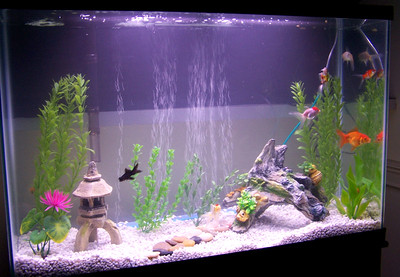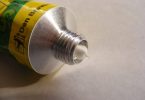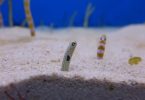Table of Contents
If you’re a fish tank owner, you may have noticed foam accumulating on the surface of the water. This can be concerning, especially if you’re not sure what’s causing it. Foam in fish tanks can be caused by a variety of factors, including protein buildup, high water flow, or poor water quality.
Understanding the underlying causes of foam in your fish tank is essential to maintaining a healthy environment for your fish.
One of the most common causes of foam in fish tanks is protein buildup. Fish produce waste that contains proteins, and if left unchecked, these proteins can accumulate on the surface of the water, creating foam. High water flow can also cause foam to form, as it can create turbulence that traps air in the water.
Additionally, poor water quality can lead to foam buildup, as excess nutrients in the water can create an environment that encourages the growth of foam-producing bacteria.
Causes
If you’ve noticed foam in your fish tank, there are several possible causes to consider. Here are a few of the most common:
Overfeeding
Overfeeding your fish is one of the most common causes of foam in a fish tank. When you feed your fish too much, the excess food can break down and create foam.
This is because the uneaten food creates a film on the surface of the water, which can trap air and create bubbles.
To prevent overfeeding, make sure you’re feeding your fish the right amount of food each day. A good rule of thumb is to feed your fish only what they can eat in a few minutes. If there’s still food left after that time, remove it from the tank.
Dirty Filters
A dirty filter can also cause foam in your fish tank. Filters help to remove debris and waste from the water, but if they become clogged or dirty, they can’t do their job effectively. This can lead to a buildup of organic matter, which can create foam.
To prevent dirty filters, make sure you’re cleaning them regularly. Follow the manufacturer’s instructions for cleaning and maintenance, and replace the filter media as needed.
Excess Protein
Excess protein in the water can also cause foam in your fish tank. Protein can come from a variety of sources, including uneaten food, fish waste, and decaying plant matter.
When there’s too much protein in the water, it can create a film on the surface that traps air and creates bubbles.
To prevent excess protein, make sure you’re not overfeeding your fish and that you’re removing any uneaten food from the tank. You can also add live plants to help absorb excess nutrients and keep the water clean.
Water Agitation
Finally, water agitation can also cause foam in your fish tank. When the water is agitated too much, it can create bubbles that rise to the surface and create foam. This can happen if you have a strong filter or if you’re using an air stone or bubbler.
To prevent water agitation, make sure you’re using the right size filter for your tank and that you’re not using too many air stones or bubblers. You can also try adjusting the flow rate of your filter to reduce agitation.
Effects
When you notice foam in your fish tank, it is important to understand the potential effects it can have on your fish and the overall health of your aquarium. Here are some of the most common effects of foam in a fish tank:
Poor Water Quality
Foam in a fish tank can be a sign of poor water quality. If you notice that the foam is persistent and doesn’t disappear after a water change, it could be an indication of high levels of organic waste in the water. This can be caused by overfeeding, overstocking, lack of filtration, or inadequate water changes.
Poor water quality can lead to a host of health issues for your fish, such as fin rot, bacterial infections, and stress.
Stress on Fish
Foam in a fish tank can also cause stress on your fish. The presence of foam can reduce the clarity of the water, making it difficult for fish to see and navigate their environment. This can cause stress and anxiety, leading to decreased appetite and weakened immune systems.
Additionally, the buildup of foam can create a breeding ground for harmful bacteria and parasites, further compromising the health of your fish.
Reduced Oxygen Levels
Another potential effect of foam in a fish tank is reduced oxygen levels. Foam can create a barrier at the water’s surface, preventing oxygen from entering the water and reducing gas exchange.
This can lead to hypoxia, a condition in which there is not enough oxygen in the water to support the fish. Symptoms of hypoxia include gasping at the surface, lethargy, and loss of appetite.
In summary, foam in a fish tank can have a range of negative effects on the health and well-being of your fish. It is important to identify the root cause of the foam and take steps to address it promptly to ensure the long-term health of your aquarium.
Prevention and Treatment
To prevent and treat foam in your fish tank, there are several things you can do. Here are some sub-sections to help you get started:
Regular Tank Maintenance
One of the most important things you can do to prevent foam in your fish tank is to keep up with regular maintenance.
This includes cleaning the tank, changing the water regularly, and removing any excess debris or waste. It’s also important to check the filter regularly and replace it when necessary.
Proper Feeding Techniques
Overfeeding your fish can lead to excess food particles in the tank, which can contribute to foam. To prevent this, make sure you are feeding your fish the appropriate amount of food and removing any excess food that is not eaten.
You can also try feeding your fish smaller portions more frequently throughout the day rather than one large feeding.
Adjusting Water Flow
If the water flow in your tank is too high, it can cause agitation and create foam. You can adjust the flow by lowering the water level or adjusting the filter to a lower setting.
If the flow is too low, it can cause stagnant water, which can also contribute to foam. Make sure the water flow is just right to prevent foam.
Using Anti-Foaming Agents
If you’ve tried all of the above methods and still have foam in your tank, you can try using an anti-foaming agent. These products are designed to break down the foam and prevent it from forming.
However, use caution when using these products as they can be harmful to your fish if not used properly. Be sure to follow the instructions carefully and use only as directed.
By following these prevention and treatment techniques, you can keep your fish tank free of foam and ensure a healthy environment for your fish.







